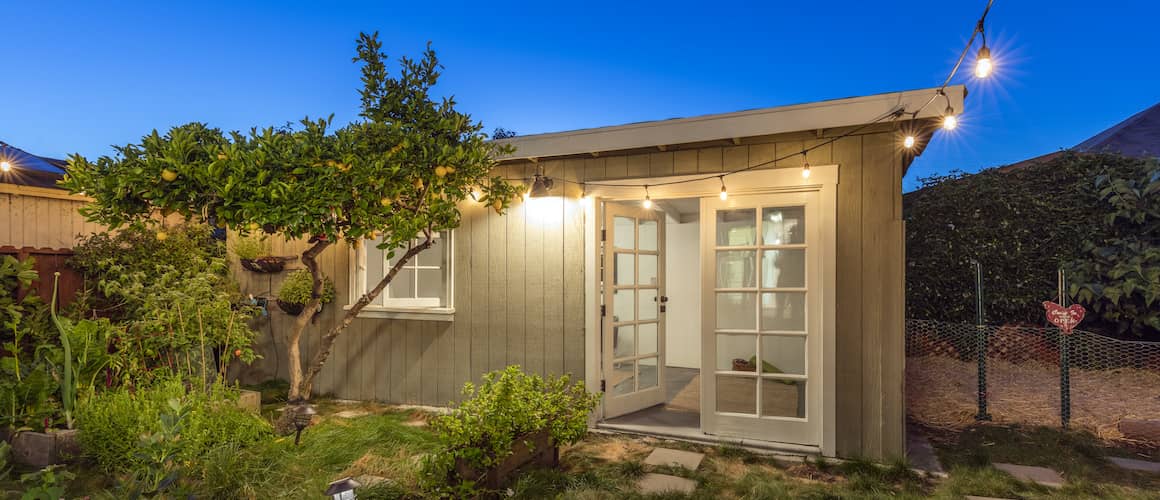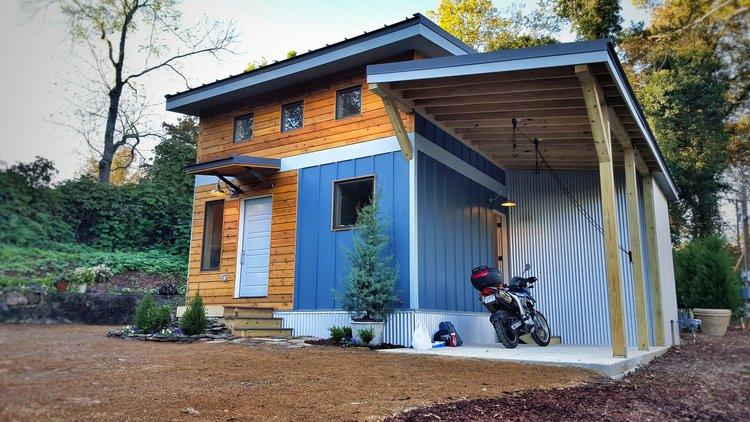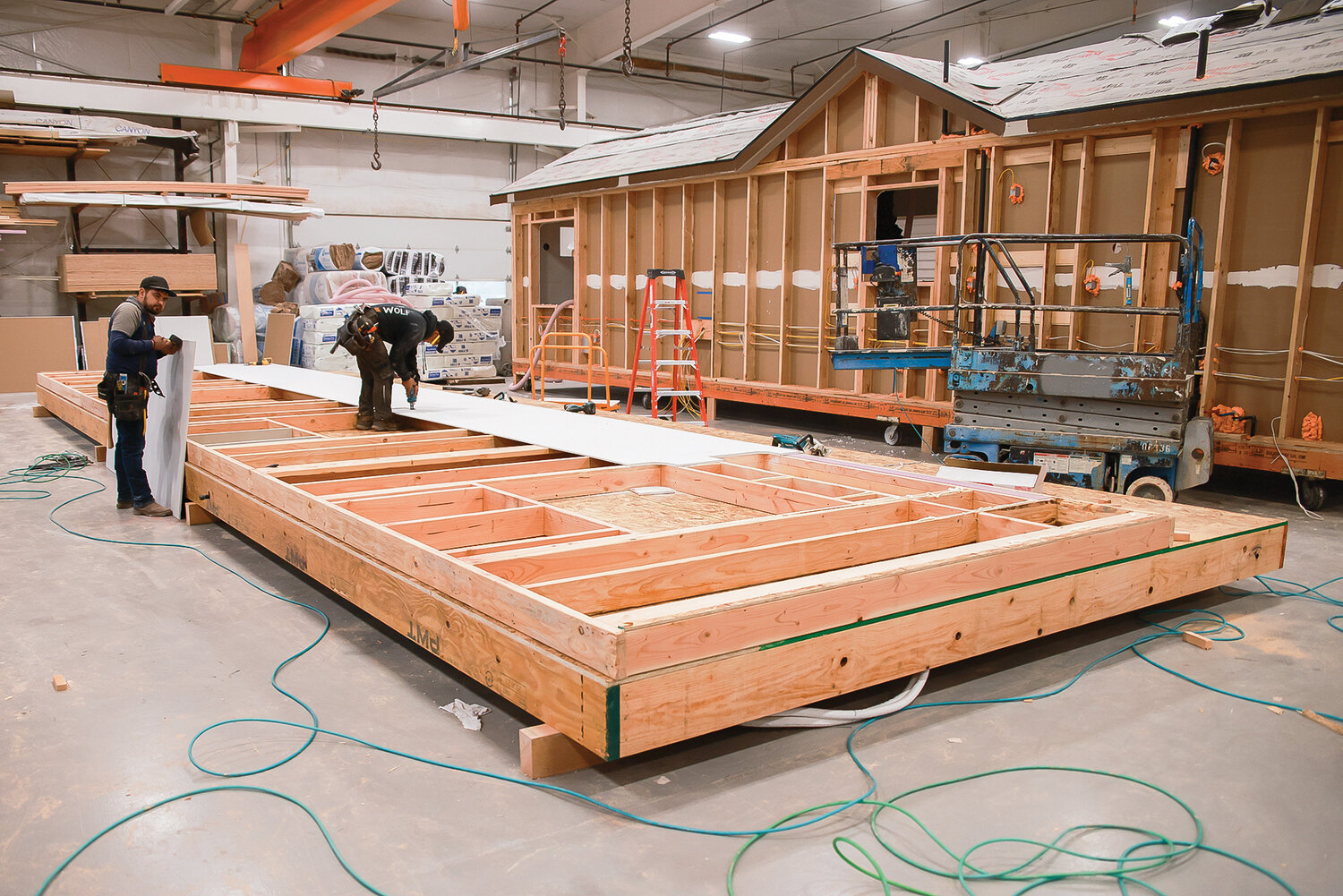By Gary Fleisher
As our world evolves with the increasing pressures of environmental concerns, soaring property prices, and changing lifestyle preferences, we find the traditional notion of what constitutes a ‘home’ shifting beneath our feet. This transformation has paved the way for the rise of tiny houses, auxiliary dwelling units (ADUs), and other compact living spaces. Far from being mere structures, these dwellings symbolize a burgeoning movement towards more affordable, sustainable, and flexible living arrangements.

The Allure of Affordability
When we talk about the allure of tiny houses and ADUs, the conversation inevitably turns to their cost-effectiveness. These smaller dwellings offer significant financial advantages over traditional housing. They are not only less expensive to build but also offer substantial savings in ongoing living expenses. This economic efficiency is drawing in a diverse crowd, from first-time homeowners to those looking to reduce their financial burdens. To illustrate this point, consider the story of a young couple who turns to a tiny house as their first home. The savings they will realize is not just in the purchase price; their ongoing costs for utilities, maintenance, and property taxes will be drastically lower than what they would face with a conventional home.

A Sustainable Future
Sustainability is another key factor driving the popularity of tiny homes. These structures require fewer resources to build and maintain, leaving a smaller ecological footprint. Environmentally conscious architects and builders are increasingly focusing on how to make these homes more energy-efficient, incorporating green technologies and innovative design elements. As a result, tiny homes are often at the forefront of eco-friendly living, appealing to those who prioritize environmental stewardship.
Flexibility and Mobility: Embracing Change
One of the most appealing aspects of tiny houses, especially those built on wheels, is the freedom and flexibility they offer. This mobility caters to a growing demographic that values the ability to move and travel without leaving the comforts of home behind. These mobile dwellings are not just for the young and single; they’re being adopted by people at various life stages and with different family dynamics. The flexibility to relocate easily or adjust to life’s changing circumstances is a significant draw.
Urban Solutions and Community Living
In densely populated urban areas, where space is at a premium, ADUs and tiny homes present a practical solution to the space crunch. These small dwellings allow for more efficient use of urban land without the need for extensive development. Moreover, tiny house communities are emerging, creating spaces where residents share values of minimalism and sustainability while fostering strong social connections.
Lifestyle and Demographic Shifts
The shift towards smaller households and the increasing preference for non-traditional living arrangements have also fueled the interest in tiny homes. People are finding that these compact living spaces align well with a minimalist lifestyle, reducing clutter and focusing on the essentials. This trend is not just about physical space; it’s about a shift in values towards simpler, more conscious living.
What Today’s Homeowners Seek
Modern homeowners are looking for homes that reflect their values and lifestyles. There’s a growing demand for dwellings that are not only eco-friendly but also equipped with smart home technology. The rise of remote work has further accentuated the need for homes with flexible, multi-use spaces and low-maintenance are increasingly attractive, especially for busy professionals.
The Future of Housing: Diversity and Adaptability
While tiny homes and ADUs offer numerous benefits, they are not a one-size-fits-all solution. Local zoning laws, lifestyle preferences, family size, and long-term goals all play critical roles in determining the suitability of these housing options. The trend towards smaller homes is part of a broader exploration of diverse housing solutions needed to address the varied challenges faced globally.
Tiny houses and ADUs represent more than just a housing trend; they signify a cultural shift in redefining the meaning of ‘home’ in our modern world. This movement isn’t just about downsizing physical space; it’s about reimagining our living spaces to better align with our values and the realities of our times. As we continue to explore and embrace these alternatives, we pave the way for a more adaptable, sustainable, and inclusive approach to housing.
Is it Time for Offsite Housing Factories to Join the Movement?
The growing demand for tiny houses and auxiliary dwelling units (ADUs) certainly presents an opportunity for traditional offsite housing factories to reconsider their production focus. Here’s an analysis of why it might be time for these factories to adapt:
Market Demand: There’s a clear and growing interest in tiny houses and ADUs, driven by factors such as affordability, sustainability, and a desire for a more minimalist lifestyle. This shift in consumer preferences suggests a potential market for offsite factories to tap into.

photo – Wolf Industries
Efficiency of Production: Offsite housing factories are renowned for their efficiency in producing traditional homes. This efficiency can be leveraged in the construction of tiny houses and ADUs. Offsite construction reduces waste, minimizes construction time, and can lead to higher quality control, making it ideal for these smaller dwellings.
Customization Potential: One of the appeals of tiny houses and ADUs is the ability to customize them according to individual needs and tastes. Offsite construction allows for a high degree of customization while maintaining production efficiency, making it an attractive option for potential buyers.
Sustainability Goals: As sustainability becomes a more significant concern for consumers, offsite construction methods can contribute to these goals. These factories can implement green building practices more consistently than traditional on-site construction, aligning with the eco-friendly ethos of tiny house and ADU dwellers.
Urban Housing Solutions: With urban areas increasingly facing space constraints and housing shortages, ADUs, in particular, offer a viable solution. Offsite factories can play a crucial role in rapidly addressing these urban housing needs.
Regulatory Environment: As more localities update their zoning and building codes to accommodate tiny houses and ADUs, there will be a more structured market for these types of homes. Offsite housing factories can capitalize on this by ensuring their designs comply with a broad range of local regulations.
Economic Opportunity: Diversifying into the tiny house and ADU market could provide new economic opportunities for these factories, including the potential for new partnerships, customer bases, and revenue streams.
Given the efficiency, customization, and sustainability advantages of offsite construction, along with the changing housing needs and consumer preferences, it seems both timely and advantageous for traditional offsite housing factories to consider addressing the tiny house and ADU market. This shift could not only benefit the factories economically but also contribute positively to addressing broader housing and environmental challenges.
.
Gary Fleisher is a renowned blogger and commentator on construction and housing trends, known for his insightful analysis of the industry.



